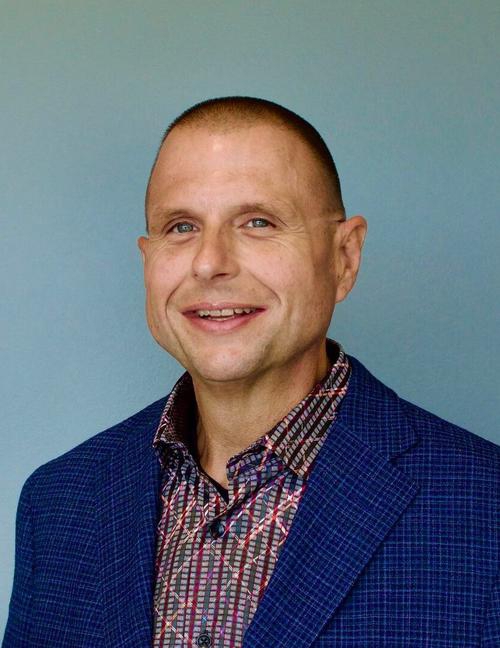If you're struggling with a stubborn wound or diabetic foot ulcer, we have a solution that could make all the difference. At Central Kansas Podiatry Associates, Dr. Benjamin Weaver offers SoftWave therapy—an innovative, non-invasive treatment that uses gentle acoustic waves to kickstart your body's natural healing process. SoftWave therapy encourages tissue regeneration and boosts blood circulation. This advanced treatment speeds up wound healing and lowers the risk of complications, giving you a better chance of full recovery.
Table of Contents
How SoftWave Therapy Works to Heal Foot Wounds
SoftWave therapy works by delivering low-energy acoustic waves to the affected area. These waves create a biological response within the body, triggering several beneficial effects:
- Increased blood flow. The acoustic waves stimulate the formation of new blood vessels, enhancing circulation to the wound site.
- Cellular regeneration. SoftWave therapy activates dormant stem cells, promoting the growth of healthy new tissue.
- Reduced inflammation. This treatment is effective in reducing inflammation, which often hinders the healing process and prolongs discomfort.
- Pain relief. Many patients find that their pain levels decrease significantly after SoftWave therapy sessions, making the healing process more comfortable.
These combined benefits make SoftWave therapy an excellent choice for healing stubborn foot wounds, especially in cases like diabetic foot ulcers, where traditional treatments may have failed. By enhancing blood flow, promoting tissue regeneration, and easing pain, SoftWave therapy creates the ideal environment for your body to heal naturally.
During your 15-20-minute SoftWave session, you will be positioned comfortably, with the wound area exposed. A gel will be applied to the skin to help conduct the shock waves. The SoftWave device's applicator is placed on or near the wound area, and low-energy shock waves will be delivered to the targeted area. The treatment is not painful, and after the session, the gel will be wiped off, and you can resume your normal activities.
Benefits of SoftWave Therapy for Wound Healing
If you're dealing with a stubborn, non-healing foot wound or diabetic foot ulcer, we understand the stress and worry it can cause. At Central Kansas Podiatry Associates, Dr. Weaver offers SoftWave therapy to make the healing process as comfortable and convenient as possible so you can focus on healing without added stress or pain.
SoftWave therapy offers many benefits:
- Non-invasive treatment. Unlike surgical options, SoftWave therapy is entirely non-invasive, which means there's no need to worry about complications or lengthy recovery times. You can get back to your daily activities right after your session.
- Faster healing. Many patients see their wounds start to close more quickly than with traditional treatments alone. This will not only give you peace of mind but also put you on a faster path to recovery.
- Reduced risk of infection. SoftWave therapy promotes rapid healing, which can significantly lower the risk of infection. This is especially important for those with diabetes.
- Improved quality of life. As your wound heals faster and pain diminishes, you'll likely notice a significant improvement in your overall well-being and ability to enjoy daily life.
Complementary Therapies
SoftWave therapy isn't just a standalone solution. Dr. Weaver may recommend various complementary treatments alongside SoftWave therapy to enhance your healing process and ensure optimal results. These additional therapies are tailored to your unique needs and may include options such as:
- Physical therapy. Our in-office physical therapy focuses on exercises and treatments designed to improve the function of your feet and ankles.
- Neuropathy therapy. If you're dealing with numbness, tingling, or pain in your feet, our neuropathy therapy can help. We use a variety of techniques to manage pain and enhance nerve function, making your daily life more comfortable.
- UltraMIST System. This system uses low-frequency ultrasound waves to treat wounds without direct contact. It is a gentle, non-contact method that helps reduce pain and lowers the risk of infection, especially for chronic wounds like diabetic foot ulcers, venous leg ulcers, pressure ulcers, and more.
By combining SoftWave therapy with these additional treatments, Dr. Weaver aims to create a comprehensive wound care plan tailored to your specific condition, promoting faster recovery and reducing the risk of complications.
Determining if SoftWave Therapy Is Right for You
Choosing the right treatment is crucial for optimal healing, and at Central Kansas Podiatry Associates, we understand that each patient's needs are unique. Our experienced podiatrist, Dr. Weaver, is committed to providing personalized care and will work closely with you to determine if SoftWave therapy is the best solution for your specific condition.
- Diabetic foot ulcers. SoftWave therapy is particularly effective for treating diabetic foot ulcers by promoting faster healing and lowering the risk of infection.
- Slow-healing wounds. If you're dealing with a stubborn wound that isn't healing, SoftWave therapy could be an excellent alternative. It may be particularly effective if traditional treatments like wound cleaning, topical or oral antibiotics, debridement, offloading, or hyperbaric oxygen therapy haven't brought the desired results.
- At risk for amputation. For those facing the possibility of amputation due to non-healing wounds, SoftWave therapy can significantly boost tissue regeneration and circulation, offering a chance for recovery.
Leaving a foot wound untreated can lead to serious complications, so don't wait until the wound or ulcer worsens and becomes a major problem. Dr. Weaver can help you explore your treatment options and determine if SoftWave therapy can help heal your foot wound or diabetic foot ulcer.









